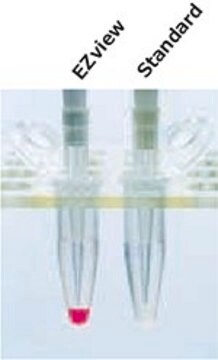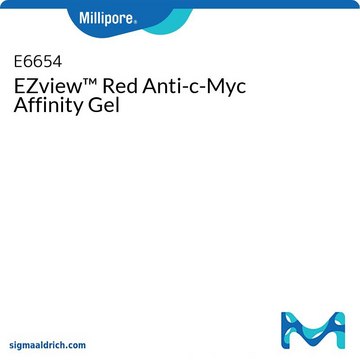P6486
EZview™ Red Protein A Affinity Gel
Synonym(s):
EZview Affinity Gel, Protein A Affinity Gel
About This Item
Recommended Products
form
liquid
analyte chemical class(es)
proteins (Immunoglobulins of various mammalian species)
technique(s)
affinity chromatography: suitable
immunoprecipitation (IP): suitable
capacity
~4 mg binding capacity (rabbit IgG)
shipped in
wet ice
storage temp.
−20°C
General description
Application
Features and Benefits
- Increased visibility - Red color reduces risk of incidental aspiration
- Improved recovery of target protein by reduced accidental loss
- Higher reproducibility - More consistent yields
Physical form
Storage and Stability
Legal Information
Signal Word
Warning
Hazard Statements
Precautionary Statements
Hazard Classifications
Aquatic Chronic 2 - Eye Irrit. 2 - Skin Irrit. 2 - Skin Sens. 1
Storage Class Code
10 - Combustible liquids
WGK
WGK 3
Flash Point(F)
Not applicable
Flash Point(C)
Not applicable
Personal Protective Equipment
Certificates of Analysis (COA)
Search for Certificates of Analysis (COA) by entering the products Lot/Batch Number. Lot and Batch Numbers can be found on a product’s label following the words ‘Lot’ or ‘Batch’.
Already Own This Product?
Find documentation for the products that you have recently purchased in the Document Library.
Our team of scientists has experience in all areas of research including Life Science, Material Science, Chemical Synthesis, Chromatography, Analytical and many others.
Contact Technical Service






